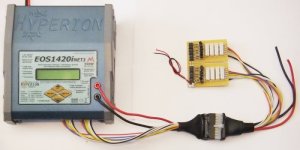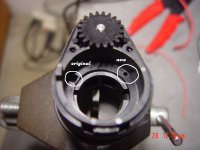j3tch1u
10 kW
rebelpilot said:Mej3tch1u said:who wants to join the Dogeratti? 8)
that's it? guess it's just you and me then rebel :lol:
rebelpilot said:Mej3tch1u said:who wants to join the Dogeratti? 8)
j3tch1u said:rebelpilot said:Mej3tch1u said:who wants to join the Dogeratti? 8)
that's it? guess it's just you and me then rebel :lol:
rebelpilot said:AussieJester,
The seat looks as though it could be modified to hoist you up from behind the bike
AussieJester said:Im in....need a crane to get me up on a Dogati but yes, im definitely in mate :lol:
KiM
Oh Hell yeah!!!dbaker said:I think we all do
johnrobholmes said:Yeah, I certainly want one in my stable! I would want a few changes though, just cause I like stuff different.
I hope to see you get this into production! How awesome would it be to see one of these going down the road in the US!
GGoodrum said:Put me on the list, as well.These will be true works of art, for sure.
-- Gary
j3tch1u said:GGoodrum said:Put me on the list, as well.These will be true works of art, for sure.
-- Gary
hi gary! now i'm going to look really bad if i don't deliver
speaking of works of art, i happen to be assembling your v4.2.6 cell-log bms right now. i like the idea of the programmable hvc/lvc cut-offs. the form-factor is a tad smaller than the 2.6 boards which is nice cuz i had virtually zero clearance at the front of the frame where it gets narrow. my backing board also makes a nice heatsink for the shunt resisters. do you plan on continuing this line? an smd cell-log bms /w "by exception" shunting would be killer! :wink: :wink:
gonna be taking apart the battery to route the alarm wires. while i'm at it, i'd also like to figure out a nice way to turn off the bms and cut off the taps without adding a million switches. i don't use a controller switch or pre-charge resistors (just the marine breaker). sometimes i forget to energize the esc before connecting the taps--would rather that they could just remain attached.

johnrobholmes said:Don't worry about getting one to me, I have a 20 bike limit that I am currently over :lol:
GGoodrum said:I agree with Richard that using something like the DeltQ or Elcon would be ideal, because it would really simplify the BMS control logic. Not sure how we'd make a cloned MW fit either.
The basic BMS design is the same, whether you use LiPo or LiFePO4. All that changes is a couple parts per channel. If you want this turnkey, I'm assuming the CellLogs go away as well, is that right? We can do it either way, but without is simpler.
Richard and I have been wanting to do a surface mount version for some time now, but we've not really had a stable design until very recently. If we do it here I'd like to do it in a way that we can make this a bit more general purpose, so it can have a wider use. Basically, it is more about the number of channels. If you find another source, and stick with LiFePO4, 16 channels would be the baseline, of course, but I think I'd do the board so that it might have a "tearoff" section of 8 more channels, so in it's full version, it could support 24 channels. Lots of options here.
-- Gary
GGoodrum said:Here's the last schematic we did for a CellLog-based BMS design:
The "Alarm" outputs are isolated, and there is an "Enable" signal that comes from the charge controller logic that turns on the CellLogs whenever the charger is connected (and on...), or if the motor controller is on. Otherwise, the CellLogs are kept off.
-- Gary
j3tch1u said:GGoodrum said:Here's the last schematic we did for a CellLog-based BMS design:
The "Alarm" outputs are isolated, and there is an "Enable" signal that comes from the charge controller logic that turns on the CellLogs whenever the charger is connected (and on...), or if the motor controller is on. Otherwise, the CellLogs are kept off.
-- Gary
i have one of your v4.2.6 boards and i don't see an "enable" pad.
GGoodrum said:What you have is a CellLog-based balancer, which was not meant to be connected all the time, only when balancing is required, so it doesn't have the enable logic.
-- Gary


